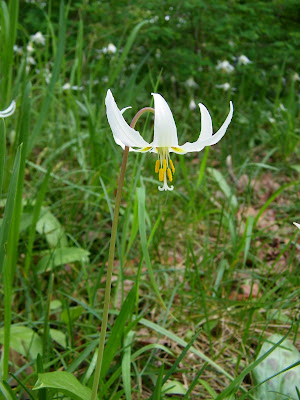I went to Discovery Park today, for the first time in months. There was a lot of noise from construction crews removing the remains of the small military installation, Fort Lawton, that used to take up part of the park.
I walked down the path thinking of work-a-day things: dinner menus, job applications, shopping lists, when I saw a small small movement to the side. I tried, as usual, to take a picture, and as usual, I failed.

But here it is, a tiny brown bird with a big beautiful voice, the
Pacific Wren, formerly known as the Winter Wren. And then all of a sudden birds were all around me: a
pileated woodpecker in the distance, a
downy woodpecker in the alder above me.
chestnut-backed chickadees on the bushes, and
ruby-crowned kinglets and
golden-crowned kinglets darting in and out of the sword ferns. It was as if I had passed through a magic door, and the quiet, winter-drab woods had come to chirping life.
No decent pictures though. My big mammal hands and eyes were too slow.
I did come across a handsome pair of
fox sparrows in the meadow, on the way back.



















































